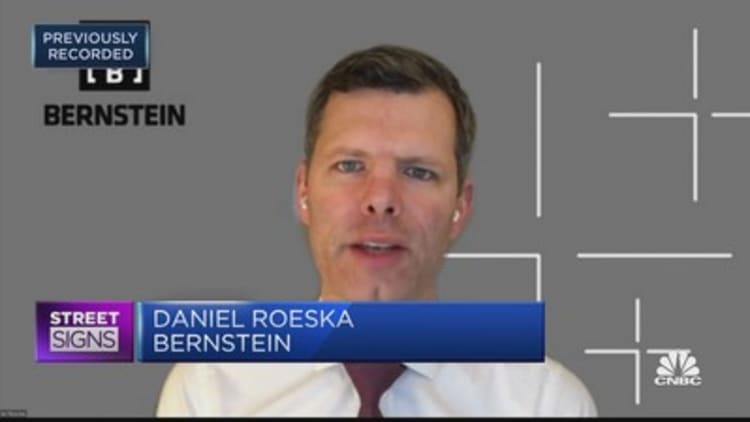SINGAPORE — A critical shortage of containers is driving up shipping costs and delays for goods purchased from China.
The pandemic and uneven global economic recovery has led to this problem cropping up in Asia, although other parts of the world have also been hit. Industry watchers said desperate companies wait weeks for containers and pay premium rates to get them, causing shipping costs to skyrocket.
This affects everyone who needs to ship goods from China, but particularly e-commerce companies and consumers, who may bear the brunt of higher costs.
In December, spot freight rates were 264% higher for the Asia to North Europe route, compared with a year ago, according to Mirko Woitzik, risk intelligence solutions manager at supply chain risk firm Resilience360. For the route from Asia to the West Coast of the U.S., rates are up 145% year over year.
Compared with last March's low prices, freight rates from China to the U.S. and Europe have surged 300%, Mark Yeager, chief executive officer of Redwood Logistics, told CNBC. He said spot rates are up to about $6,000 per container compared with the usual price of $1,200.
Even rates from the U.S. have gone up, though not quite as dramatically, according to Yeager.
"The reason for this is the Chinese are being so aggressive about trying to get empty containers back … that it's hard to get a container for US exporters," he wrote in an email to CNBC, adding that 3 out of 4 containers from the U.S. to Asia are "going back empty."
In fact, the shortage in Asia has also led to a similar crisis in many European countries, such as Germany, Austria and Hungary, as shipping carriers redirect containers to the East as quickly as possible, said Woitzik.
Trade surplus furthers container imbalance
There are a few factors stemming from the pandemic driving this phenomenon.
First, China is sending out a lot more exports to the U.S. and Europe than the other way round. Its economy bounced back faster as the virus situation within its borders was basically under control by the second quarter of last year. As a result, containers are stuck in the West when they are really needed in Asia.

There are about 180 million containers worldwide, but "they're in the wrong place," said Yeager of Redwood Logistics.
"So what's happening is what was already a trade surplus in China has turned dramatically more severe and the reality is, there's three containers going out for every container that's coming in," he said.
Making matters worse, orders for new containers were largely canceled during the first half of last year as most of the world went into lockdown, according to Alan Ng, PWC's mainland China and Hong Kong transportation and logistics leader.
"The magnitude and pace of the recovery have caught everyone by surprise," he said. "The sudden recovery in trade volume has seen virtually all of the major shipping lines needing to add significant container capacity to address the container shortage issue."
Limited alternative
The shortage is further exacerbated by limited air freight capacity. Some high-value items that would normally be delivered by air, such as iPhones, now have to use containers via sea instead, according to Yeager.
International flight volumes have plunged due to virus and travel restrictions.
"Air freight companies typically use that extra capacity at the belly of a passenger plane. Well, there's just not very many passenger flights, so not as much air service," he said. "The lack of options, combined with this crazy amount of demand, has produced this crisis."

The container crisis affects all companies that need to ship goods. But analysts say the situation has a pronounced effect on e-commerce retailers that primarily offer consumer goods, many of which are made in China.
Ikea's Singapore operations called it a "global transport crisis" in a mid-January Facebook post:
"The surge in demand worldwide for logistical services at this time has resulted in a global shortage of shipping containers, congested seaports, capacity constraints on vessels, and even lockdown in certain markets, amongst other challenges."
The furniture giant estimated that about 850 of its 8,500 products sold in Singapore are affected by shipment delays, which Ikea said affects availability and planned promotions.
Redwood Logistics' Yeager said retailers have to decide: "Do I pay a significant premium, or do I push back delivery substantially and (disappoint) customers?" The related costs are either being absorbed by retailers or passed on to customers, he said.
Race to build new containers
While some new containers have been ordered, PWC's Ng said they will not be ready right away. He pointed to a report by the Shanghai International Shipping Research Centre released in the fourth quarter last year, which said that the shortage issue is likely to last for another three months or more.
Chinese tech giant Alibaba's logistic arm Cainiao launched a container booking service last week, citing the global shortage. It said its service would span over 200 ports in 50 countries, and port-to-port shipping fees would be 30% to 40% cheaper, according to Reuters.
But even the race to build more containers could be hobbled by delays, according to Yeager. He said the pandemic has also hit the supply of steel and lumber needed to build containers.


